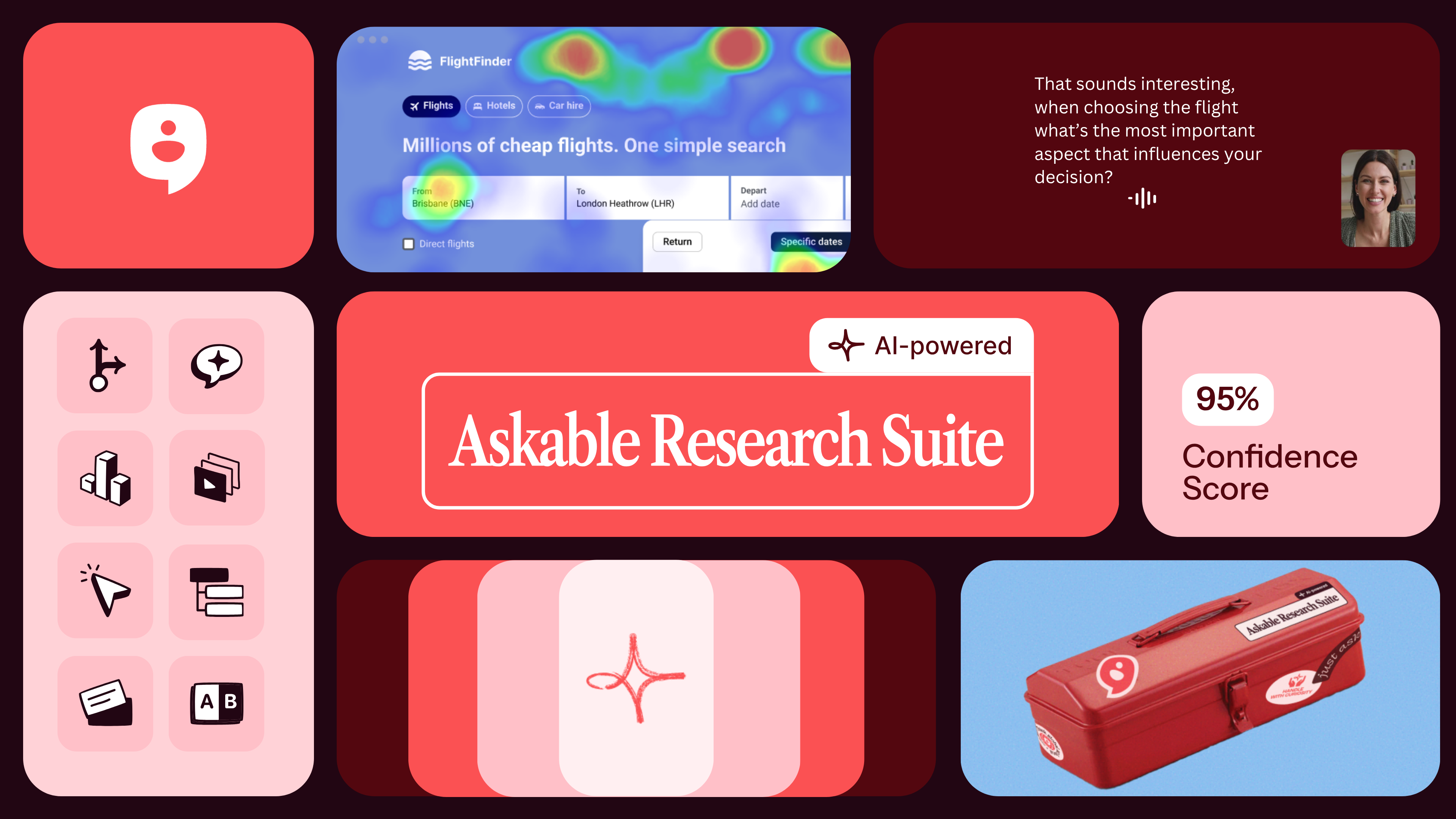The complete guide to user testing tools
•

•

How unmoderated testing transforms product development
Speed matters in product development. Decisions pile up, timelines tighten, and research often ends up being the first thing pushed aside. Not because teams don’t value user insight, but because traditional testing feels heavy and slow. The time it takes to recruit, schedule, moderate, and analyse can turn good intentions into missed opportunities.
Unmoderated user testing tools change that. They allow teams to gather authentic feedback without waiting for researcher availability or battling calendars. These tools make it possible to collect data at scale and turn insights around quickly. That shift turns research from a bottleneck into a built-in part of design and development.
User testing tools let you watch real people interact with your product. They show where confusion happens, where users pause, and what makes sense to them. This clarity replaces assumptions with evidence. It reduces rework, supports better design decisions, and keeps products aligned with user needs.
UX professionals are increasingly being asked to deliver faster results with fewer resources. That growing pressure means teams need tools that simplify research, reduce overhead, and make it easier to test ideas early and often.
Unmoderated testing lets participants complete tasks independently. You design the study, set the questions or tasks, and upload your prototype or live product. Participants then complete the study on their own schedule. The system records what they do, what they say, and how they interact.
The platform captures audio, video, clicks, scrolls, and written feedback. You can then review recordings, analyse behaviour, and identify patterns. Because it is asynchronous, you can test with people in multiple time zones and receive results in hours instead of days.
This approach works especially well for usability validation, content comprehension, first-click testing, and comparative studies. The key is clarity. Participants should understand what they need to do without live guidance.
Askable is the modern research platform for velocity-obsessed teams.
Let's chatUnmoderated testing is best suited to clear, structured tasks where the goal is to measure behaviour rather than emotion. It is ideal when you want to validate a prototype, test design variations, or gather feedback quickly from a large group.
It works particularly well when:
When teams rely on unmoderated methods for these kinds of studies, research becomes part of the delivery process rather than an interruption.
The strongest platforms go beyond recording screens. They include all the capabilities researchers and designers need in one place.
Look for:
A good tool makes the entire process smooth, from setup to sharing insights. It should reduce manual effort and make results easy to communicate.
Get a sneak peak into the product, and everything Askable can do for you.
Contact salesAskable’s Research Suite brings everything together in one platform. It supports unmoderated testing, AI-guided studies, moderated sessions, and expert-led delivery. You can switch between study types without changing tools, which keeps your workflow simple and consistent.
Askable’s participant panel includes more than one million verified contributors with a 97.8 percent completion rate. The platform handles recruitment, task delivery, and data collection automatically. Researchers get access to detailed analytics, visual heatmaps, and AI-generated summaries that reveal patterns quickly.
Askable’s AI does more than transcribe. It interprets behaviour, finds themes, and connects insights across multiple studies. That helps teams spend less time watching videos and more time making design decisions.
Continuous research is not just a trend. It is a proven way to build better products faster. According to The Good Insights Hub, teams that make testing part of their regular workflow see higher conversion rates, improved usability, and fewer late-stage redesigns. When unmoderated testing becomes routine, insight becomes a constant input rather than an occasional project.
Source: The Good – Continuous Research: What It Is and Why It Matters
This approach shifts the culture. Instead of waiting for permission to test, teams test because it is expected. Research becomes part of the rhythm of delivery, not a disruption.
Fast research still needs to be good research. The value of unmoderated testing lies in how it makes quality feedback accessible at the pace modern teams need. It allows you to validate, iterate, and improve continuously, without waiting weeks for answers.
Askable was built to make that possible. It combines speed, scale, and rigour in one platform so you can move quickly and still stay confident in your decisions.
If you want to build products that people actually enjoy using, start by learning from them sooner.
👉 Book a demo or launch your first unmoderated study today.